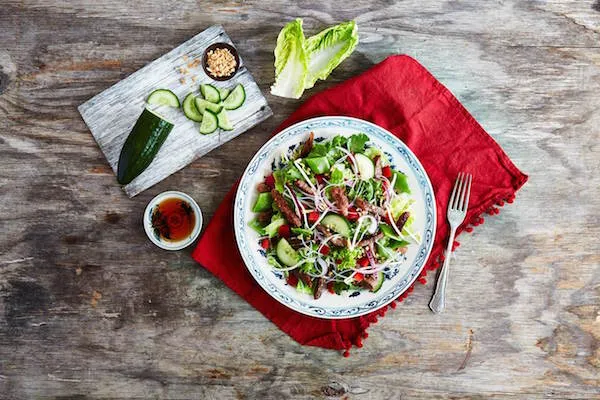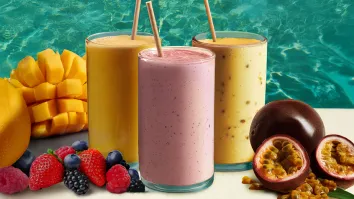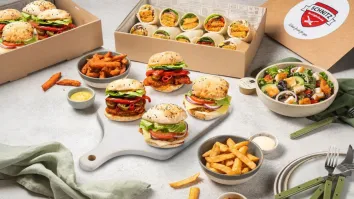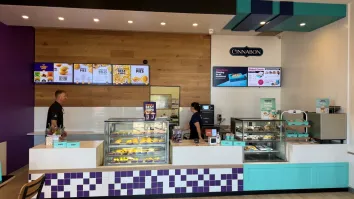
Will healthy QSRs continue to reduce demand for traditional players?
Execs from Sumo, Nutrition Station, and Crisp offer their insights on movements surrounding the growing category.
The rise of consumer awareness of fast food’s nutritional content and the conscious effort to choose healthier options have definitively transformed the industry over the past five years.
Healthier, premium choices with less fat, sugar and salt were the inevitable response by operators, resulting in an influx of competing players offering higher quality fast food.
SumoSalad, which recently launched its new range of soups and hot meals, notes two trends that they have been seeing in the healthy fast food chain scene: considerable growth of the low carb/ketogenic diet and the rise of plant-based eating.
“There are a lot more offerings that help customers with choice, but they also create confusion when health claims are not substantiated,” Sumo chief customer officer Lawrence Mitchell told QSR Media.
“As a brand that focuses on everyday health, we have created dishes that give customers [who are] focused on these trends good options, a design-your-own range [that] can be personalised for each individual,” he added, whilst also noting its recent merger with THR1VE that has a range of low carb-ready meals delivered directly to customers’ homes.
(Also read: Building a 'house of wellness brands': the strategy behind the Sumo-THR1VE merger)
Nutrition Station, now offering school-friendly recess and lunch meal plans through its recently-launched NU Kids range, made significant investments in technology and automation in seeing the increased use of online delivery services and the shift towards low rent alternatives.
“The rise of online delivery has both been a blessing and a curse to many QSR operators. It has allowed brands to access new customers outside the bounds of the traditional brick & mortar store, whilst also forcing them to remodel their operations & accept lower margins from delivery orders,” Nutrition Station marketing manager Brock Waugh said.
“The often-substantial initial investment, crippling rent and growing labour cost has forced brands to consider (and potentially adopt) low rent alternatives. Using ‘dark-kitchens’ or low-rent sites whilst maintaining avenues to reach customers will be a challenging yet prosperous venture going forward.”
During its inception, Melbourne-based Crisp Creative Salad noted a focus on making healthy food taste great. Years later, its head says those two elements are no longer enough, also observing a “much greater” focus on sustainable business practices.
“One of the most significant developments we have observed is the customer emphasis on sustainable packaging. We have received e-mails from customers saying that they loved our products but would not buy another salad until we offered an alternative to the plastic packaging,” Crisp founder Edward Tolfree said.
The chain responded to this particular feedback by launching its ReturnR reusable bowl programme last year, allowing customers to pick up a stainless steel bowl for a $5 deposit.
Forecasted industry growth slower through 2023-24
In a new report from IbisWorld, industry growth is forecasted to be slower over the next five-year period compared with the previous five-year period.
Over the five years through 2018-19, revenue was expected to rise at an annualised 3.3% to $20.1 billion, which includes anticipated growth of 0.5% in the current year due to growth in discretionary income. However, the median age of Australia’s population has slightly increased over the past five years, shifting demand towards healthier fast food options. Older age groups, notably, less likely to consume industry products.
Thus, traditional fast food’s share in industry revenue has declined whilst revenue from premium and healthy categories has grown. The market research company noted “intense” competition amongst industry players, as traditional operators have fought for market share whilst new establishments offering healthier options have reduced demand for existing players.
Another factor is the rise of external competition, with supermarkets’ range pre-cooked meals competing with restaurants and cafes. Now, industry revenue is projected to grow at an annualised 0.5% over the five years through 2023-24, to $20.7 billion.
Aside from growing discretionary income and general health consciousness, IbisWorld says uniqueness and convenience are two notable sweet spots for healthy QSRs in order to differentiate themselves.
“With more healthy fast food establishments expected to enter the industry over the next five years, the ability to be different and unique in a highly saturated will be very advantageous,” IbisWorld senior industry analyst Bao Vuong explained.
“In terms of convenience, that is not a huge competitive factor right now in the healthy fast food space, as consumers are generally willing to wait for freshly prepared healthier foods, with products often more time-effective than home cooking. However, as more healthy fast food products flood the market, this will become a more important basis of competition.”
Widening distribution: essential or not?
Executives collectively share the importance of ensuring greater convenience for customers, with their respective brands already utilising or exploring different channels.
“You’ll be seeing our brand continue to innovate around breakfast, lunch and dinner, collaborate and partner with brands that align with our values and widen our distribution into wholesale and other channels,” Mitchell said.
“Using both our online platforms and any existing unexploited cafe space, we have been trialling NU Retail products. Collecting data and customer feedback, we will look to develop our own branded products,” Haugh said.
Crisp, meanwhile, launched a new range that features ready-made snacks, salads, wraps and healthy tubs that are now available in five of their shops and in more than 20 independent supermarkets in Victoria.
“The inspiration for the Chomp by Crisp range came from the healthy QSR scene in the UK through the likes of Pret-a-Manger, EAT & Itsu. Interestingly, the best-selling item in the Chomp by Crisp range is 3 hard boiled free-range eggs in a tub – a true “real food” protein fix. The range reflects customer expectations that even snack foods on the run should be healthy,” Tolfree explained.
But are wholesale/multi-channel sales “must haves” for healthy chains in light of growing competition? Vuong says no.
“The appeal of a lot of these healthy chains would be freshness, whereas some consumers might see precooked meals as not that fresh. Whilst saying that, precooked meals could provide some healthy fast food operators a distinct advantage in the healthy fast food space when it comes to convenience,” he explained.
“In the end, it all really depends on the type of market you’re trying to appeal for when it comes to your products. Are you trying to target those consumers who are looking for freshness which might mean the food might take a bit more time to make or are you trying to target those time-poor consumers looking [for] a quick, healthy lunch?”
























